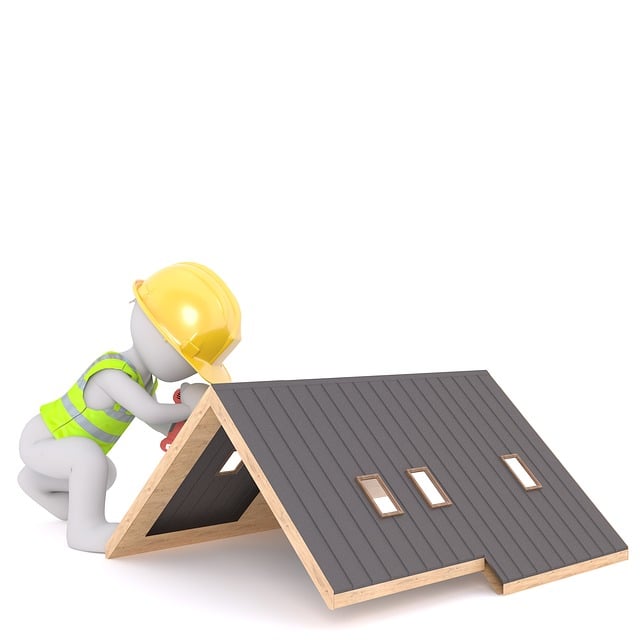Gutters, vital for protecting homes from water damage, face issues like debris buildup, corrosion, and structural damage over time due to environmental factors, material weaknesses, and extreme weather. Regular inspection and timely repairs are crucial for gutter longevity and preventing costly home damage. Before gutter replacement, prioritize safety and gather essential tools. Meticulously inspect gutters during dry and wet weather for damage such as cracks, holes, or sagging. Assess water leaks, mold growth, and debris obstructions. Proper maintenance includes regular cleaning and monthly inspections, with post-installation care focusing on cleaning and checking for loose or damaged parts. Gutter guards simplify maintenance and protect against impacts, extending lifespan and ensuring optimal water flow, saving homeowners from costly repairs.
“Gutter maintenance is essential for preserving your home’s integrity and protecting against water damage. When gutters show signs of sagging or damage, it’s crucial to address the issue promptly. This comprehensive guide delves into the process of replacing damaged gutter sections, covering everything from understanding common gutter problems to post-installation care. By equipping yourself with the right tools, safety precautions, and assessment techniques, you’ll be well-prepared to navigate this essential home maintenance task.”
Understanding Gutter Damage: Common Causes and Types
Gutters are an essential component of any home’s exterior, playing a crucial role in directing rainwater away from the foundation and preventing water damage. However, over time, they can suffer from various types of damage, becoming clogged, corroded, or simply sagging due to age and environmental factors. Understanding these common issues is the first step in effective gutter maintenance.
The most frequent causes of gutter damage include debris buildup, which can clog the gutters and lead to overflow; corrosion from prolonged exposure to moisture and salt; and structural deterioration caused by heavy branches or extreme weather conditions. Different types of gutter materials have varying resistance to these factors. For instance, aluminum is lightweight and resistant to corrosion but can bend easily, while steel gutters are sturdier but more prone to rust. Regular inspection and timely repair are vital to ensure the longevity of your gutters and prevent costly home damage.
Preparation for Replacement: Safety Measures and Tools Needed
Before replacing any gutter sections, ensuring safety should be your top priority. Gutter work can involve climbing ladders and handling sharp objects like nails or debris, so wearing appropriate gear is non-negotiable. This includes a sturdy ladder (preferably with an aluminum or fiberglass step for better grip), safety goggles to protect against falling debris, gloves to keep hands safe, and appropriate footwear. Consider having an assistant for support, especially when handling heavy materials.
Gathering the right tools and materials is another crucial step in gutter replacement. You will need new gutter sections (preferably made from durable materials like aluminum or steel), hangers, screws, a power drill with appropriate bits, a hacksaw for cutting to size, and a level to ensure proper alignment. Additionally, having a bucket, cloth, and cleaning supplies on hand can help in the event of leaks during installation. Proper preparation will not only make the replacement process smoother but also ensure longer-lasting results in your gutter maintenance efforts.
Identifying Damaged Sections: Assessment Techniques for Your Gutters
To begin your gutter replacement project, it’s crucial to identify the damaged sections. Gutter maintenance is key to ensuring your home’s protective system functions optimally. Start by inspecting your gutters during dry and wet weather conditions. Look for signs of damage like cracks, holes, corrosion, or sagging. Climb up a ladder (always prioritize safety) and physically examine the gutters and downspouts for any loose connections or sections that appear weakened.
Assessing the extent of the damage is essential. Check for water leaks at joints and connections. Inspect the surrounding areas for signs of water stains or mold growth, which could indicate long-term issues. Take note of any obstructions like debris or leaves that might be contributing to drainage problems. These assessments will help guide your decision on how many sections need replacement and what materials are best suited for your gutter maintenance needs.
Installation Process: Step-by-Step Guide to Replacing Gutter Sections
Post-Installation Care: Maintaining Your New Gutter Sections and Preventing Future Damage
After installing new gutter sections, proper post-installation care is crucial for maintaining their integrity and preventing future damage. Regular cleaning is essential to keep your gutters free from debris, such as leaves and twigs, which can clog the system and lead to water damage. A once-a-month inspection should suffice for most homes, ensuring that everything remains in place and identifying any loose or damaged sections early on.
Additionally, consider using gutter guards or covers to prevent debris accumulation. These accessories not only simplify cleaning but also protect your gutters from potential impacts, like falling branches. Keeping your gutters well-maintained extends their lifespan, ensures proper water flow, and ultimately saves you from costly repairs down the line. Effective gutter maintenance is an easy yet vital part of home ownership, ensuring your home’s exterior remains in top condition.
